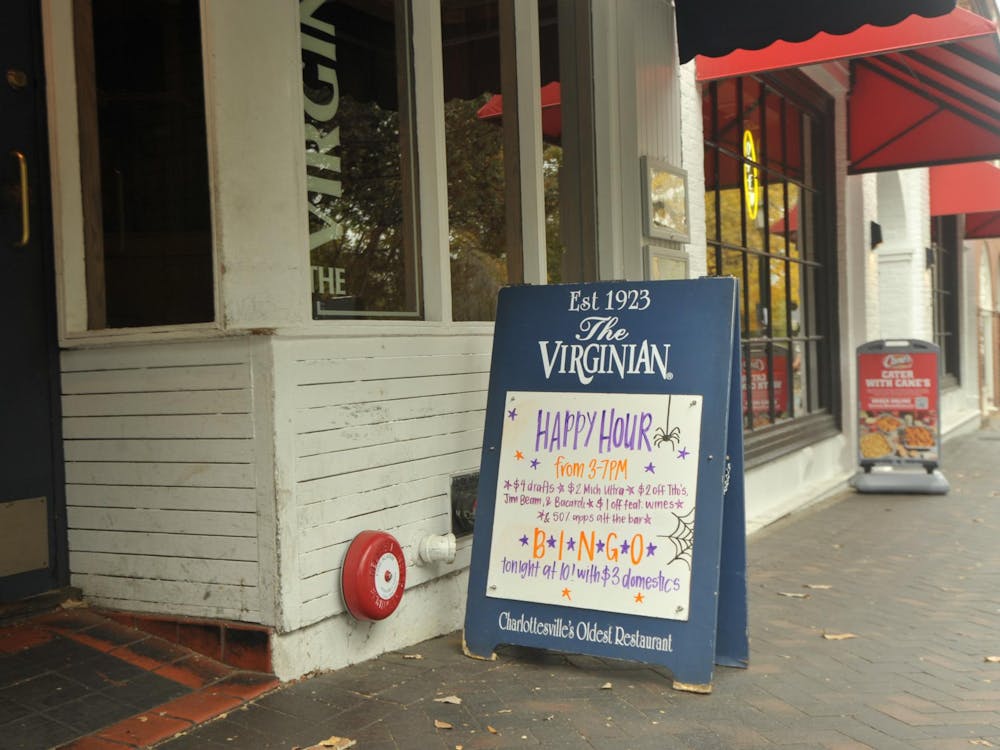Eighteen University students won several distinctions Tuesday during the first-ever statewide redistricting competition. Redistricting is required every 10 years following a census report to ensure the number of residents in each district remains consistent, and Virginia will undergo this process before the end of the year.
The students were divided into two teams of nine and, along with representatives from other schools across the state, constructed and submitted their own proposals of how the lines should be redrawn. A total of 55 redistricting propositions were submitted by 13 Virginia state schools for review by Gov. Bob McDonnell's Independent Bipartisan Advisory Commission on Redistricting. Winners were chosen by Thomas Mann, a senior fellow at the Brookings Institution, and Norman Ornstein, resident scholar at the American Enterprise Institute.
The members of both University teams are enrolled in Politics Prof. Charles Kromkowski's Virginia Elections and Politics class. Kromkowski said the competition served as an eye-opener for his students. By allowing participants to work with hands-on data, the competition provided students with an opportunity to learn about redrawing legislative boundaries in addition to working with District Builder, an open source software redistricting application.
Michael McDonald, associate professor of government and politics at George Mason University and lead investigator of the Public Mapping Project, the group that developed District Builder, said the software was created with the aim of providing an opportunity for the public to be involved in the redistricting process.
"What we've seen is that the redistricting plans embody the desires of the current political parties, so they continue to manipulate them in their favor," McDonald said. "What we have done with the competition is what happens without political partisanship, to show freshness."
Kromkowski said the competition exposed the arbitrariness symptomatic of representatives participating in gerrymandering, a practice in which politicians manipulate voting district boundaries in their own favor.
"I think one of our goals was to show that redistricting could be done outside of smoke-filled rooms," fourth-year College student Ned Burns said. "We wanted to show that this process can be done without partisan bias."
Fourth-year College student Elizabeth Robinette participated in the competition and said the teams wanted to develop district maps that "make more sense" and that are "less partisan, so it doesn't look like salamanders crawling all over Virginia." She said this term refers to districts drawn nonsensically, creating squiggly boundaries reminiscent of the animal's outline.
Using District Builder, students redrew districts to satisfy the two main dimensions of the competition: drawing both politically competitive and non-competitive plans.
"A politically competitive plan meant developing maps where the districts were split relatively evenly between Republicans and Democrats, while developing a non-competitive proposal meant consideration for the apolitical criteria, such as population equality, the Federal Voting Rights Act, compactness, contiguity and respect for communities of interest," Burns said.
The second team from the University designed a redistricting map for the Virginia Senate. Since several existing districts were either over- or underpopulated, composing districts of equal population emerged as one of the main challenges. In attempting to remedy these types of complications, student proposals sought both to focus on compactness and to adhere to the Voting Rights Act.
The Voting Rights Act requires states to establish certain numbers of Senate, House and Congressional districts in which minorities comprise at least half of the total district population.
"One thing each team created was a voting rights district that was less serpentine, more compact, that still made sense and still was majority African-American," said Jennifer Marsico, Ornstein's assistant and one of the volunteer judges of the competition.
Within the competition division, the University teams won both first and second place for designs of Congressional maps, first place for design of state Senate maps and second place for House of Delegate maps. In the other category, the Governor/Commission division, the University teams together won second place for all three maps: the Senate, House and Congress.
McDonnell's bipartisan redistricting commission will examine the winning student maps, but the proposals may not be adopted.
"Originally, I didn't think that the commission was going to take our plans seriously," Burns said, "but we've heard that there is an interest within the bipartisan commission to really take a look at our plans."
Regardless of the outcome, University students came away from the competition with $6,250 in cash prizes Tuesday, in addition to a working knowledge of the District Builder software package that could help students pursuing jobs in the campaign arena, Kromkowski said.
"We have our class tonight at 7, and it's the first time that we're all getting together since we've heard the results," Burns said, "Given our success and the knowledge we're taking away from this experience, we all feel a real sense of accomplishment"






